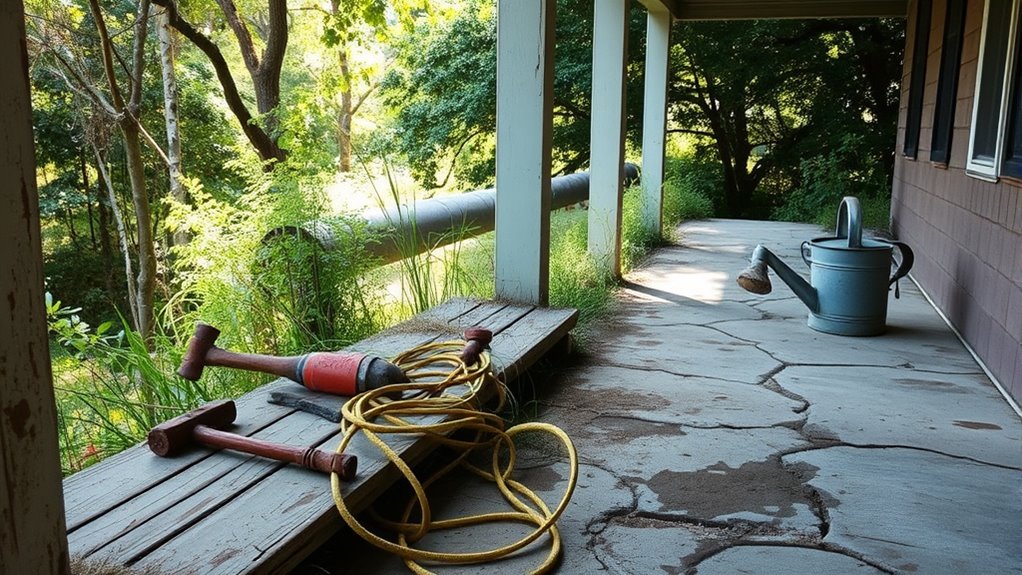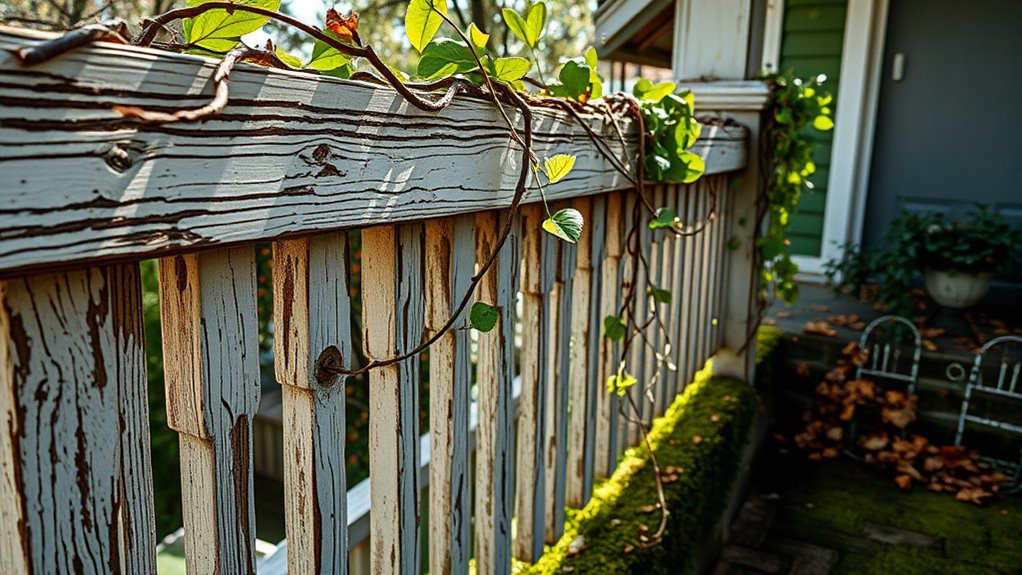Hidden costs of home ownership often catch owners off guard, especially when neglecting regular maintenance. Unexpected repairs like plumbing leaks, electrical issues, or aging systems can be costly if ignored early. Budgeting about 1-3% of your home’s value annually helps prepare for routine upkeep, but surprises still happen. By staying informed and proactive, you can avoid big expenses down the line. Keep exploring to uncover more tips on managing these hidden costs effectively.
Key Takeaways
- Regular maintenance prevents small issues from escalating into costly repairs or structural damage.
- Budgeting 1-3% of the home’s value annually helps cover routine upkeep and unexpected repairs.
- Aging systems like water heaters and appliances often require costly replacements beyond their expected lifespan.
- Ignoring early warning signs such as leaks or water stains can lead to mold, water damage, and expensive fixes.
- Staying informed about common home issues and conducting regular inspections reduces the risk of surprise repair costs.
Understanding the True Costs of Home Maintenance

Owning a home often seems like a great investment, but many buyers overlook the hidden costs that can quickly add up. One of the biggest surprises is maintenance. Even if your home is new or well-built, regular upkeep is unavoidable. Over time, things wear out, and if you’re not prepared, these costs can become a financial strain. From fixing leaky faucets to replacing broken appliances, maintenance tasks are ongoing. You might think small repairs won’t matter, but they can escalate if ignored. For example, a minor leak in your roof may seem insignificant initially, but left unattended, it can cause water damage, mold, and costly repairs down the line.
You need to set aside a budget for routine maintenance. A common rule of thumb is to allocate about 1-3% of your home’s purchase price annually for upkeep. This might include landscaping, gutter cleaning, HVAC servicing, and pest control. Seasonal tasks, such as preparing your heating system for winter or inspecting your air conditioning before summer, also incur costs. These are predictable expenses, but they can add up quickly, especially if you neglect them or encounter unexpected issues. For instance, a malfunctioning furnace in winter or a broken sprinkler system in summer can disrupt your daily life and require urgent repairs, often at premium prices.
Some maintenance issues are more urgent and costly than others. Plumbing problems, electrical issues, or structural repairs can threaten your home’s safety and value. If you notice water stains on your ceiling, it might seem minor, but it could signal a leaking roof or pipe, which needs immediate attention. Ignoring these signs can lead to more extensive damage, mold growth, and expensive repairs that could have been avoided with prompt action. Regular inspections and preventive maintenance can help catch issues early, saving you money and headaches. Additionally, aging systems like your water heater or appliances will eventually need replacing, which can cost hundreds or thousands of dollars. Being aware of home maintenance schedules and typical lifespan expectations can help you plan better financially and avoid unexpected expenses. Furthermore, understanding costly repair surprises can motivate homeowners to stay proactive, preventing small issues from turning into major problems. Moreover, staying informed about common home repair issues can prepare homeowners to address problems before they become critical.
Frequently Asked Questions
How Often Should I Schedule Routine Home Inspections?
You should schedule routine home inspections at least once a year to catch issues early. Regular inspections help you identify potential problems before they become costly repairs, saving you money and stress. Focus on key areas like the roof, plumbing, electrical systems, and HVAC. If your home is older or experiences harsh weather, consider more frequent inspections. Staying proactive guarantees your home stays safe, efficient, and in good shape.
What Unexpected Repairs Tend to Be the Most Costly?
When facing unexpected repairs, you should be aware that some tend to be more costly than others. Common expensive surprises include roof leaks, foundation issues, and HVAC system failures. These repairs often require professional help and can quickly drain your budget. Staying proactive with regular inspections can help catch problems early, saving you money in the long run. Being prepared for these costly repairs helps you maintain your home’s value and safety.
How Can I Budget Effectively for Maintenance Costs?
To budget effectively for maintenance costs, you should start by setting aside a dedicated fund, ideally 1-3% of your home’s value annually. Keep track of past repairs to identify patterns and plan for future needs. Regular inspections and preventative maintenance can catch issues early, saving you money. Create a monthly savings plan, and don’t forget to adjust your budget as your home ages or as unexpected repairs arise.
Are There Seasonal Maintenance Tasks I Should Prioritize?
You should prioritize seasonal maintenance tasks to keep your home in top shape. In spring, focus on gutter cleaning and roof inspections. Summer is ideal for cooling system checkups and landscaping. Fall calls for chimney cleaning and sealing drafts, while winter, prepare pipes for freezing and check insulation. Staying ahead of these tasks helps prevent costly repairs later and keeps your home safe and comfortable year-round.
What Are the Long-Term Financial Impacts of Deferred Maintenance?
You might find it surprising, but neglecting deferred maintenance can seriously hurt your finances over time. When you delay repairs, small issues often escalate into costly problems, like replacing entire systems or structures. This not only drains your savings but also reduces your home’s value. Staying proactive helps you avoid these surprises, saving you money and keeping your property in good shape long-term. Don’t wait—address maintenance issues early.
Conclusion
While owning a home promises comfort and stability, overlooking maintenance costs can quietly drain your savings. Just as a well-maintained house provides lasting value, neglecting it leads to unexpected expenses and stress. Remember, the true cost of homeownership isn’t just the purchase price—it’s ongoing care. By investing in maintenance now, you safeguard your home’s future, turning fleeting comfort into enduring security. Don’t wait for problems to reveal their true price—stay proactive today.









